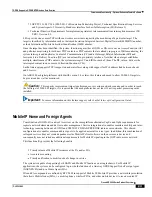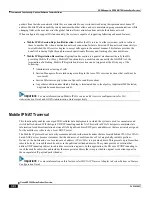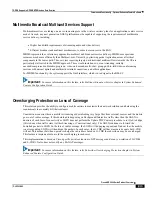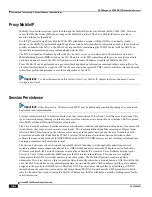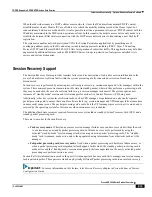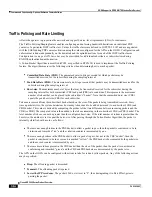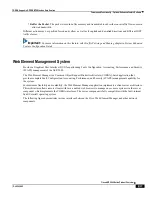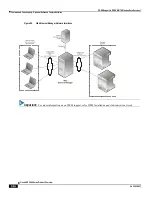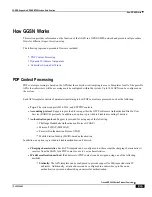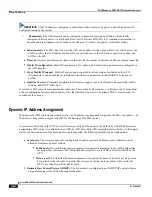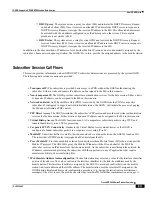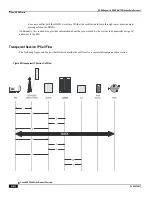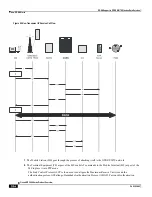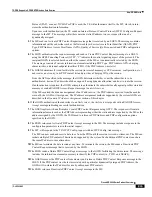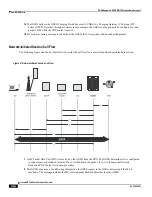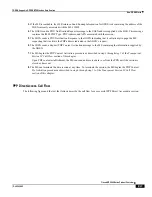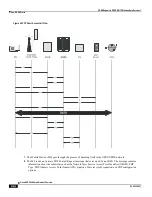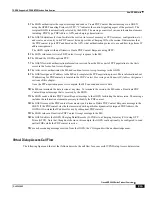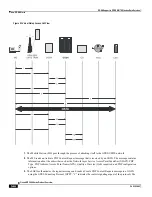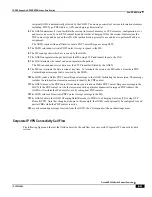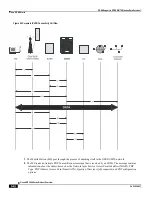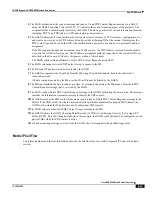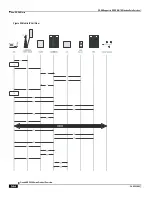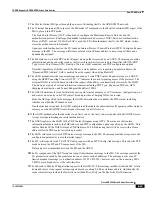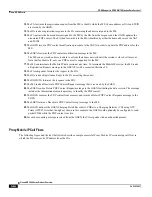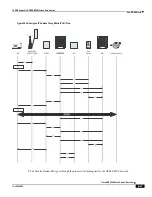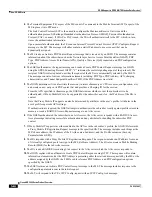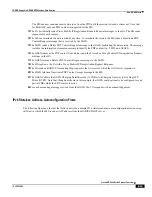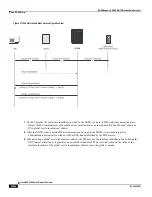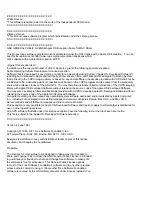
GGSN Support in GPRS/UMTS Wireless Data Services
How GGSN Works ▀
Cisco ASR 5000 Series Product Overview ▄
OL-22938-02
Protocol (PAP), or none). If CHAP or PAP is used, the TE will authenticate itself to the MT, which, in turn,
stores the authentication information.
Upon successful authentication, the TE sends an Internet Protocol Control Protocol (IPCP) Configure-Request
message to the MT. The message will either contain a static IP address to use or request that one be
dynamically assigned.
3.
The MS sends an Activate PDP Context Request message that is received by an SGSN. The message contains
information about the subscriber such as the Network layer Service Access Point Identifier (NSAPI), PDP
Type, PDP Address, Access Point Name (APN), Quality of Service (QoS) requested, and PDP configuration
options.
4.
The SGSN authenticates the request message and sends a Create PDP Context Request message to a GGSN
using the GPRS Tunneling Protocol (GTPC, ―C‖ indicates the control signaling aspect of the protocol). The
recipient GGSN is selected based on either the request of the MS or is automatically selected by the SGSN.
The message consists of various information elements including: PDP Type, PDP Address, APN, charging
characteristics, and tunnel endpoint identifier (TEID, if the PDP Address was static).
5.
The GGSN determines if it can facilitate the session (in terms of memory or CPU resources, configuration, etc.)
and creates a new entry in its PDP context list and provides a Charging ID for the session.
From the APN specified in the message, the GGSN determines whether or not the subscriber is to be
authenticated, how an IP address should be assigned if using dynamic allocation, and how to route the session.
If authentication is required, the GGSN attempts to authenticate the subscriber locally against profiles stored in
memory or send a RADIUS Access-Request message to an AAA server.
If the MS required the dynamic assignment of an IP address (i.e., the PDP Address received from the mobile
was null), the GGSN will assign one. The IP address assignment methods supported by the system GGSN are
described in the
Dynamic IP Address Assignment
section of this chapter.
6.
If the GGSN authenticated the subscriber to an AAA server, the AAA server responds with a RADIUS Access-
Accept message indicating successful authentication.
7.
The GGSN replies with an affirmative Create PDP Context Response using GTPC. The response will contain
information elements such as the PDP Address representing either the static address requested by the MS or the
address assigned by the GGSN, the TEID used to reference PDP Address, and PDP configuration options
specified by the GGSN.
8.
The SGSN returns an Activate PDP Context Accept message to the MS. The message includes response to the
configuration parameters sent in the initial request.
9.
The MT, will respond to the TE‘s IPCP Config-request with an IPCP Config-Ack message.
The MS can now send and receive data to or from the PDN until the session is closed or times out. The MS can
initiate multiple PDP contexts if desired and supported by the system. Each additional PDP context can share
the same IP address or use alternatives.
10.
The MS can terminate the data session at any time. To terminate the session, the MS sends a Deactivate PDP
Context Request message that is received by the SGSN.
11.
The SGSN sends a Delete PDP Context Request message to the GGSN facilitating the data session. The message
includes the information elements necessary to identify the PDP context (i.e., TEID, and NSAPI).
12.
The GGSN removes the PDP context from memory and returns a Delete PDP Context Response message to the
SGSN. If the PDP context was the last associated with a particular dynamically assigned PDP Address, the
GGSN will re-claim the IP address for use by subsequent PDP contexts.
13.
The SGSN returns a Deactivate PDP Context Accept message to the MS.
Summary of Contents for ASR 5000 Series
Page 1: ......
Page 26: ......
Page 48: ...New In Release 10 0 SCM Features Cisco ASR 5000 Series Product Overview OL 22938 02 ...
Page 50: ......
Page 58: ......
Page 68: ......
Page 126: ......
Page 138: ......
Page 146: ......
Page 218: ......
Page 236: ......
Page 356: ......
Page 374: ......
Page 422: ......
Page 496: ......
Page 572: ......
Page 654: ......
Page 700: ......
Page 726: ......
Page 784: ......
Page 816: ......
Page 844: ......
Page 906: ......
Page 926: ......
Page 942: ......
Page 943: ...Cisco ASR 5000 Series Product Overview OL 22938 02 Chapter 30 Technical Specifications ...
Page 966: ......
Page 972: ......

